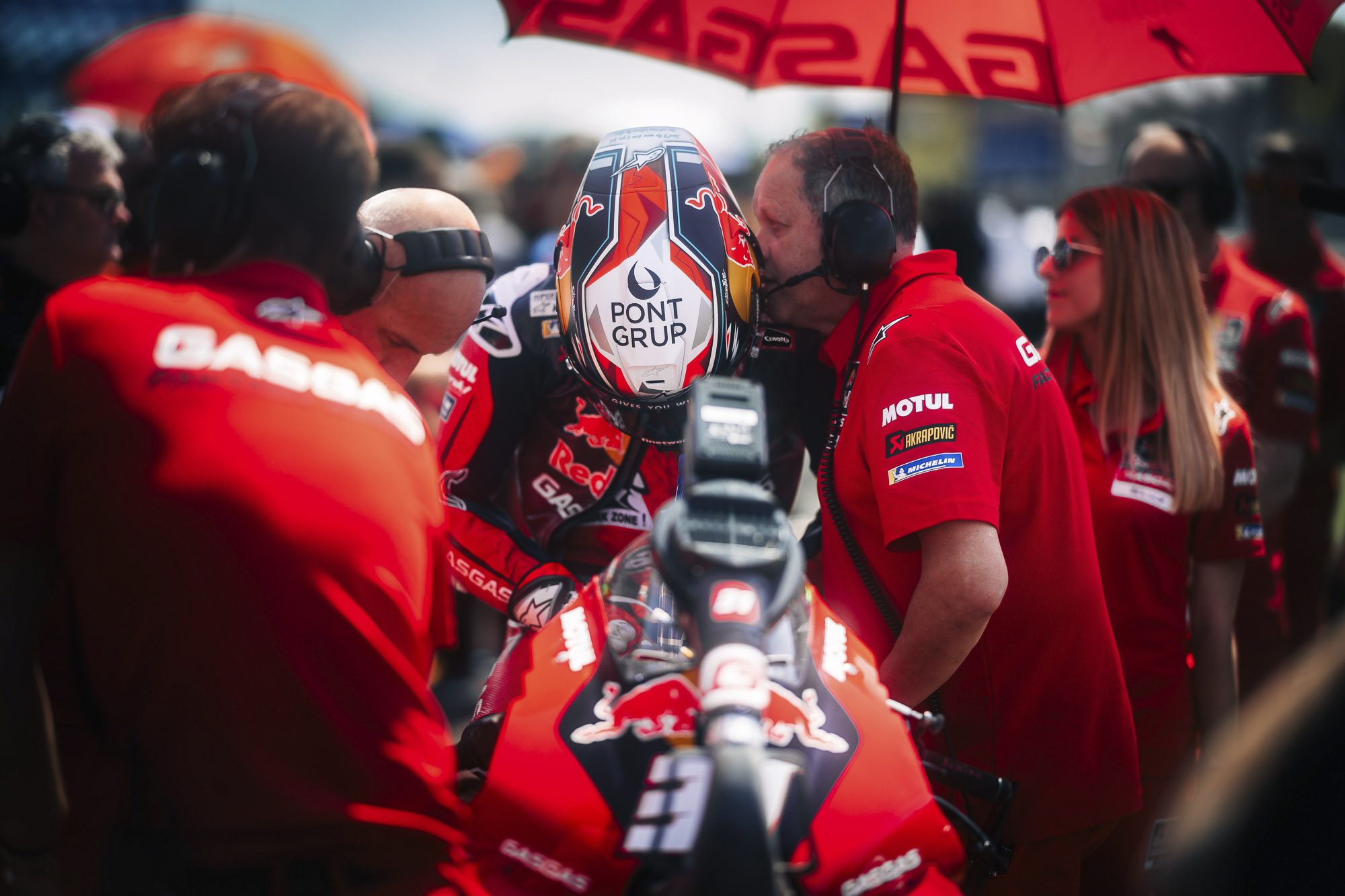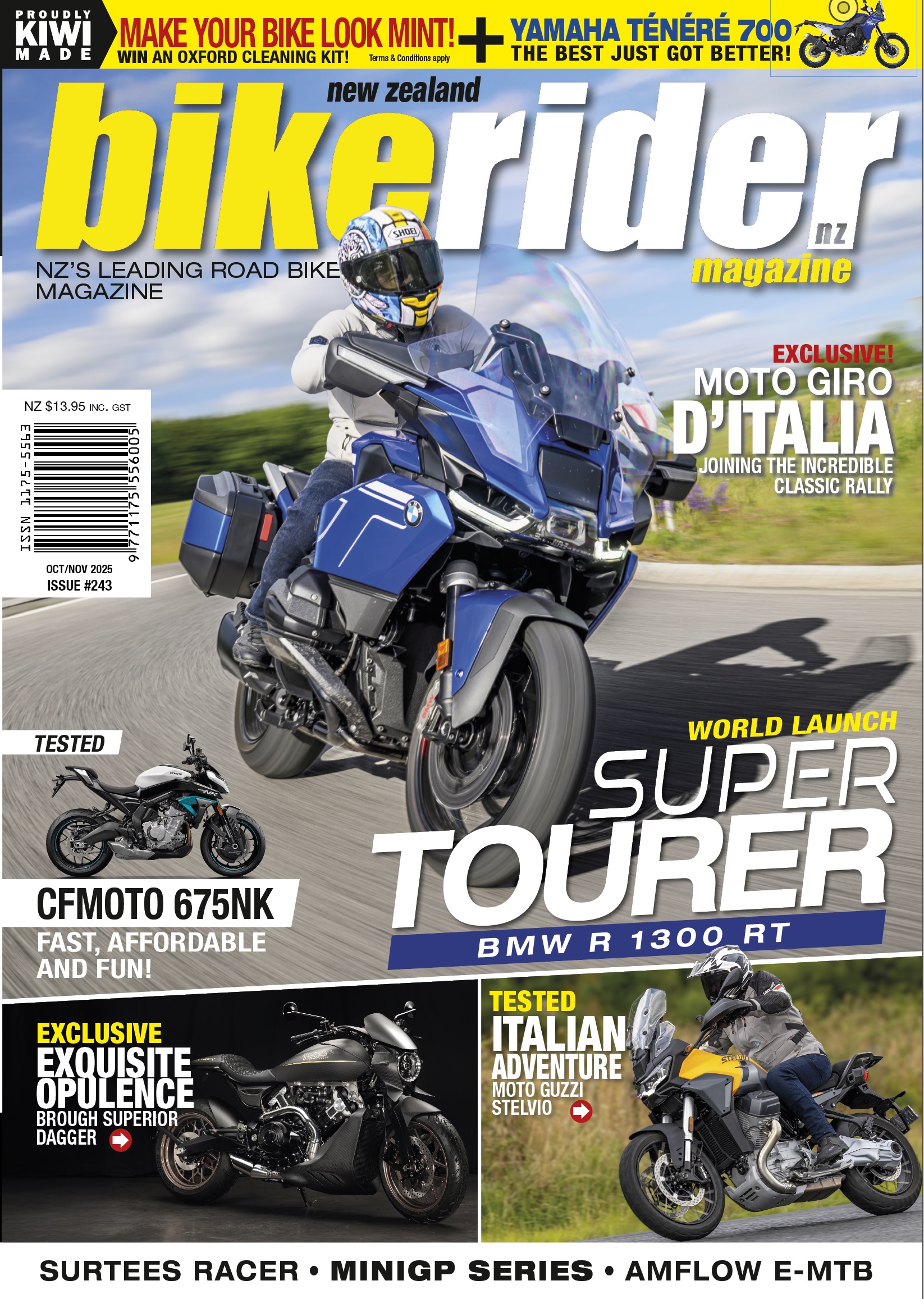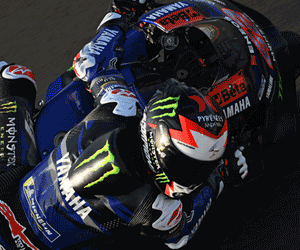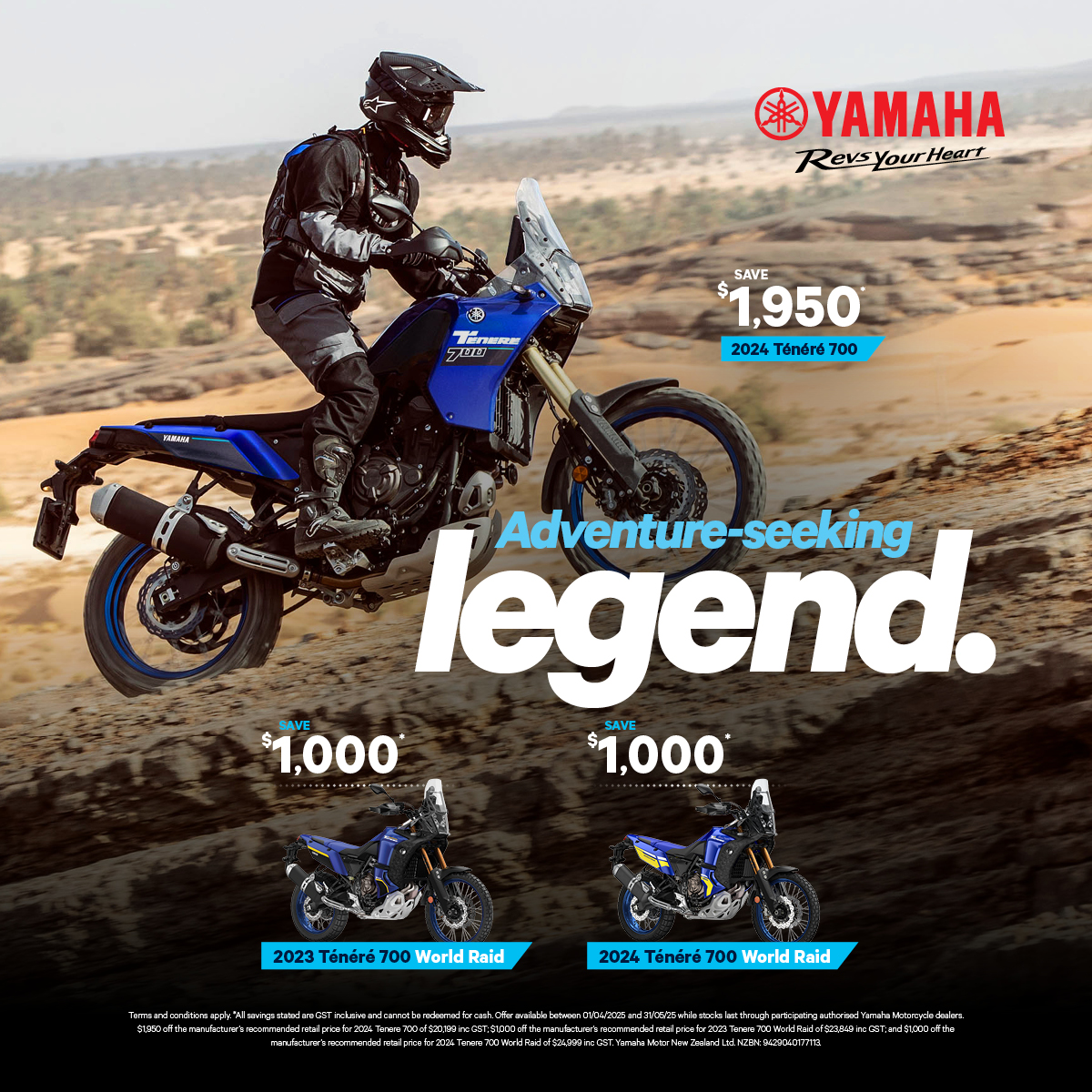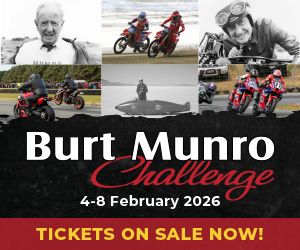When Kiwi Paul Trevathan visited home in Dunedin before the Australian round of the MotoGP series last year, he agreed to sit down for a talk at the local Otago Motorcycle Club.
Words: Mark Burrows Pics: Mark & KTM/Gas Gas
Paul Trevathan has nothing but the greatest respect for the current crop of MotoGP riders, and as the crew chief of Pedro Acosta in the Gas Gas team (now the KTM team), he should know. The former Dunedin man was at his old stomping ground at The Otago Motorcycle Club between the Malaysian and Australian MotoGP rounds. He gave an enthralled hundred lucky OMCC members and guests a potted history full of anecdotes and memories, some of which can’t be printed, of his time in Europe before and during his current stint at KTM.
He says that riders will tell you that the qualifying lap now is like a cat losing one of its lives. “When you see the data afterwards, you think, my God, it’s really impressive what these humans are pushing themselves to do.” The sprint race format adds to that, “You used to do two qualifying runs a weekend, but now if you’re unlucky, you have to do six. So, it’s six laps of maximum”. He says that they tend to learn to live on this high-risk factor, live on the edge, and this is why the racing is now 15 or 20 seconds faster than a year or two ago.
“You see crashes, and you see people losing their front, and ask why do you do that? It’s because he’s there, he’s on the edge of the tyre, he’s on the edge of the bike, and he’s just willing to sit there. But the risk is big, you know, is when it goes off, it’s horrible”.
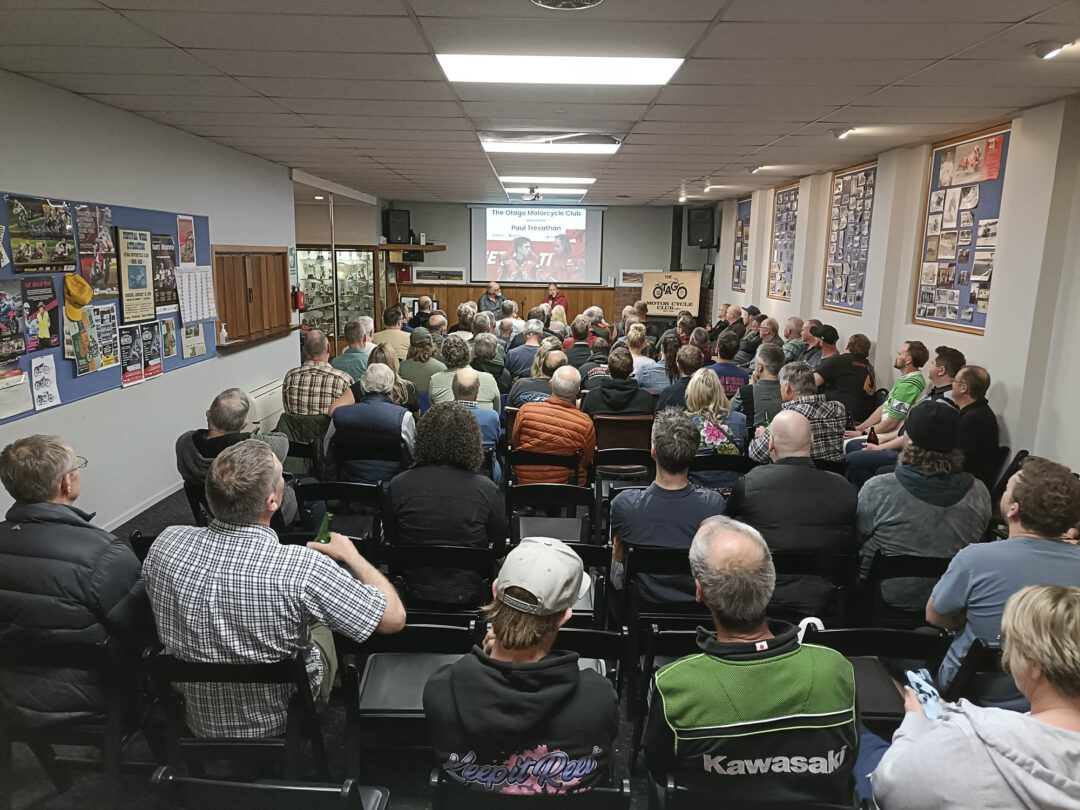
Trevathan is equally enamoured with his current protégé, Pedro Acosta, and thinks that his big difference from the other boys who are in the box is that Pedro finds riding a motorcycle very, very easy. “He is just super relaxed, super natural, and has this capacity left over to understand everything around the bike. He’s a gadget man. The first thing he loved about the MotoGP bike was all the buttons and everything and, from the first exit he was touching everything. Of course, it was the wrong time to do that, but he wanted to understand what everything did. So, this is something that has amazed everybody.”
Pedro has another nickname, “We call him the sponge, because whatever he was told, he could go out and just do”. Trevathan explains that Acosta has this fantastic ability to understand the data, understand what he is being told and then make it happen. “This once-in-a-lifetime type of level of riding and his work ethic is incredible. You know when he’s really pushing, he’ll ride three times in the day. He gets up at six o’clock in the morning and stops with all the cleaning and organizing at 10 o’clock at night.”
Acosta doesn’t believe that KTM is inferior to the Ducati. “He doesn’t believe there’s a perfect bike. He doesn’t ask for a perfect bike, so he doesn’t want to use these excuses, and he doesn’t want the company to use these excuses. It’s all about doing a better job, and if we do a better job, we can beat them, you know. This is his way of working, which is super refreshing. Otherwise, the rider wants to blame all the things that are out of his control”.
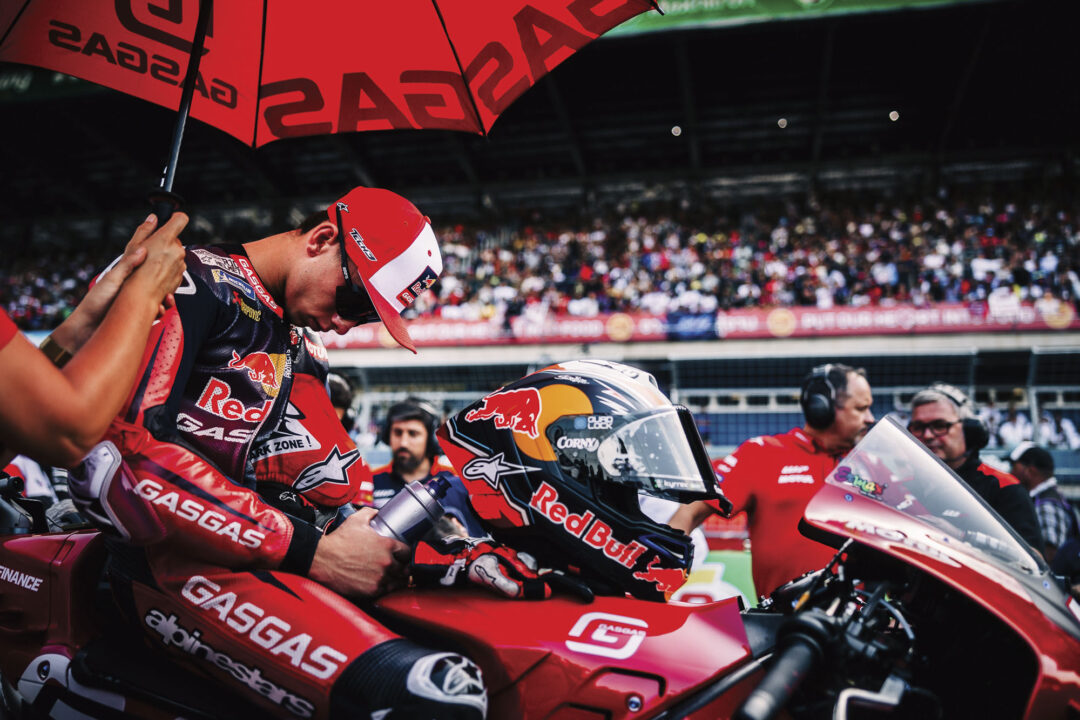
From MX to MotoGP
Trevathan himself has had an extensive career in and around racing teams in Europe since the early 1990s, when he arrived on his OE. After initially working as chief mechanic in the international motocross paddock, he moved to MotoGP as Peter Clifford’s WCM team crew chief. Following a couple of years there and after spending ten years working at Ohlins rubbing shoulders with the world’s top riders, he got the call from Pit Beirer to join the fledgling KTM project in 2014.
The long list of names of riders he has had the pleasure and, sometimes displeasure, to work with include, in no particular order: Pol Esparago, Darryll King, Tallon Vohland, Stefan Everts, Fred Bolley, Yves Demaria, Sebastian Tortelli, Pit Beirer, Marnicq Bervoets, Michael Maschio and Steve Ramon, Johann Zarco Dani Pedrosa, Miquel Olivera, and Brad Binder, Mika Kallio, Marco Simoncelli, Alvaro Bautista, Jorge Lorenzo, Andrea Dovizioso, Gigi Dall‘Igna and many others.
Trevathan received the call to join KTM’s fledging race project at the end of 2014. It took persistent requests from Pit Beirer to finally entice him over, but the timing allowed Paul to be involved from the ground up. Initially, he assisted with the Moto3 team, but the team’s long-term goal was always MotoGP. The plan was to do a full test year of racing in 2016. “They said we want you in the MotoGP project, but please first help the Moto3”.
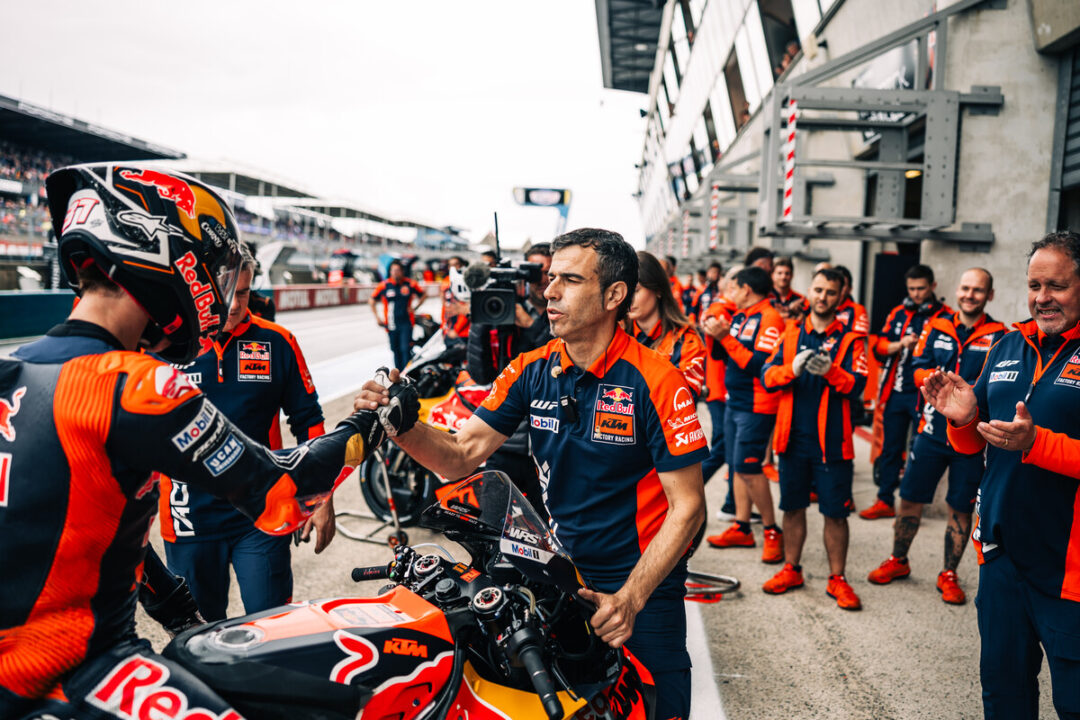
GP Ambitions
Paul enjoyed his time in the Moto3 paddock. “It was the first time having the whole bike in your hand. I was lucky to work with the Aki Ajo Moto3 team”. Brad Binder and Miguel Oliveira were the riders at that time. “So, this was a super good team, but the bike was a piece of shit. Horrendous. My God, it was a motocross bike with low handlebars. It was pretty nasty, but the engine was good, the engine was super good. It went straight and it stopped good, but everything else in between was absolutely horrendous.” They even ended up cutting the chassis with a hacksaw and hiding it from the rider to try to understand if they could make it better. “We raced the whole season like that, it was like going back 20 years and racing.”
The Hondas that Trevathan had been working on were beautiful motorcycle art, “although Honda sometimes looks quite plain, but close up, if you’re an engineer and you see the finishing on all the parts, the extra cuts, the etching and the machining, you know, this is what we call mechanical porn”. It’s was an example that they wished to emulate, but, as always, there is a catch. “The cost of that level of finish is five times the price. Then we went to the KTM and ….”
That said, the KTM team started the year very far off the pace and at the end of the year they only lost the championship by four points. It was a big, big turnaround. The main driver for KTM was brand awareness, to raise the profile of KTM as a brand. The success story was that they expected a measurable return in five years but reputedly got it in one. “It’s massive. The reach of MotoGP in the motorcycle world is clearly really, really impressive”.
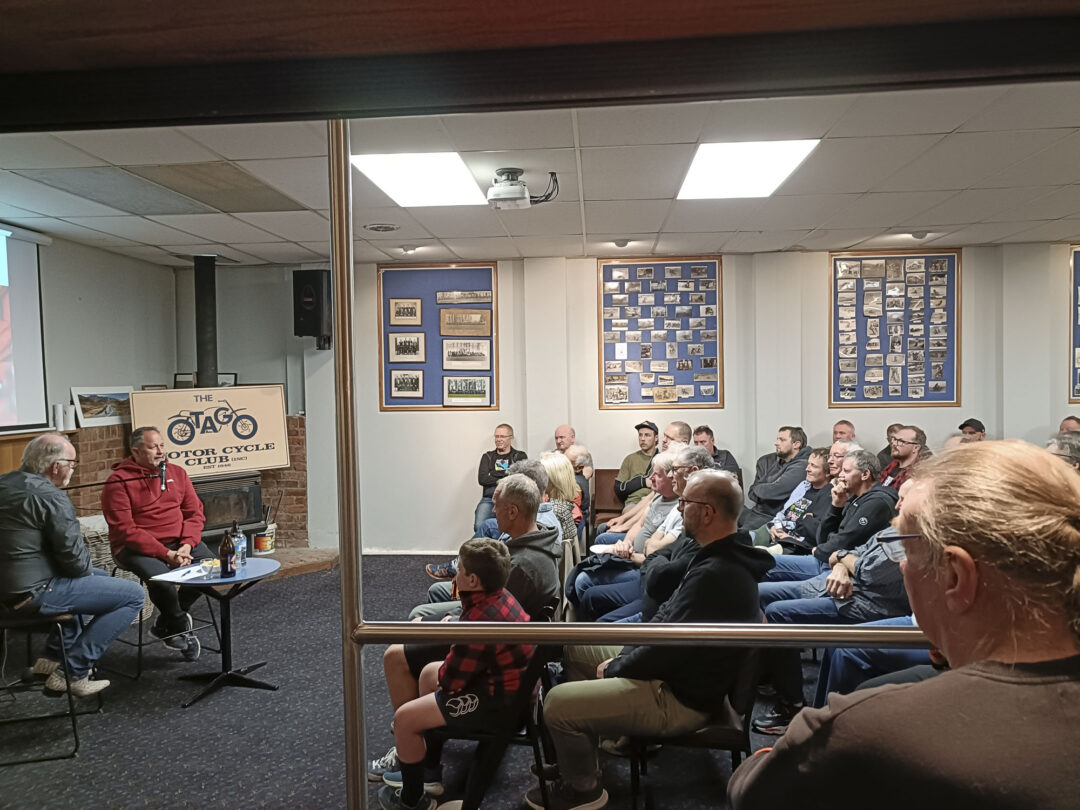
Many Hats
Equally revealing is Trevathan’s take on the responsibilities of being a crew chief. “If I’m really honest, it’s not something I ever wanted to do, but it’s something that the team believed that I was quite okay at.”
To this day, if somebody wanted to take his job, Paul reckons he would not be too worried about it. “Yeah, I love the bike, I love working, but I kind of like the behind the scenes probably more than being the guy in the front”.
He thinks that his big gift is to be able to communicate with people, which is why so many teams have sought him out. Caring for the human side and keeping all the nationalities together. Giving somebody a hug if they are having a bad day, or when somebody’s too hot, you cool them down.
“It’s really the atmosphere inside the box that is a massively important thing, especially for the rider. You know, you travel 200 days a year, you sure as hell get pissed off at somebody sometimes, but you can’t show the rider. This is his workplace and this is his place of trust”.
The feeling of responsibility is clear. “You’ve got to make sure the bike’s right because the rider goes out there and goes 300 kilometres an hour in the first lap; he doesn’t spend a lap trying to feel if it’s okay or not. The responsibility is massive, and you have to step up and do that job. That’s the number one thing why you’re paid. It’s just the rules of the sport, you know, so the trust and the ownership of that trust are very, very important. If you do fuck up, you have to put your hand up and learn from it. Not hide.”
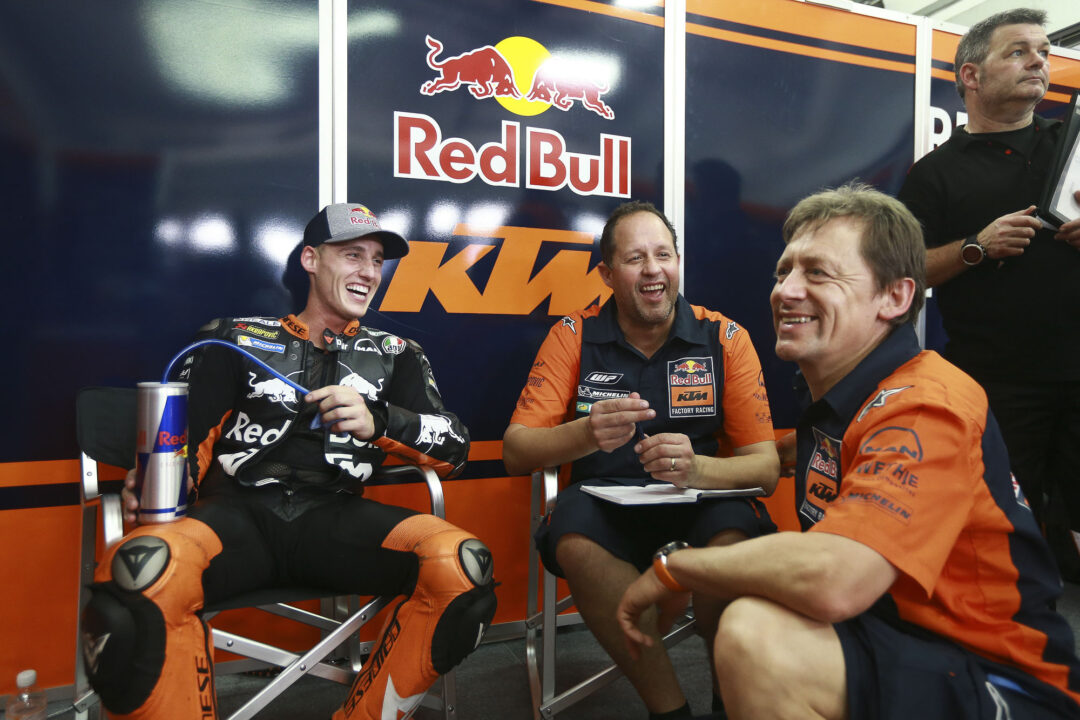
Not All Beer & Skittles
Obviously, it’s not all beer and skittles. As Trevathan explains, managing the human element is the key to team success, but equally, this carries a heavy burden. Perhaps one of the people Paul respects most is Pol Esparago. He tells that when Pol came back to the KTM team the condition of Pols return was that he would only work with Paul. Pol had given much to the company; he was the loved one of the company, loved for his energy, his personality and his team approach. KTM had asked Trevathan and Esparago to start up the Gas Gas project and Paul’s respect and feeling for Pol is obvious when he tells of the aftermath of Pols FP2 accident at the Portuguese MotoGP in 2023.
“Portimão was a nightmare where he basically died at the track. He had this big crash. A really dark, dark day in racing for me. Only the fact that he was in such great physical condition meant that he survived; he should have died. In all fairness, they thought he was dead at one point. But, yeah, the guy, the work ethic and everything he had to come back from was incredible, you know. But, yeah, the last part of the year he came back he was in constant pain. It was not a great year last year. It was really, really difficult for all of us.”
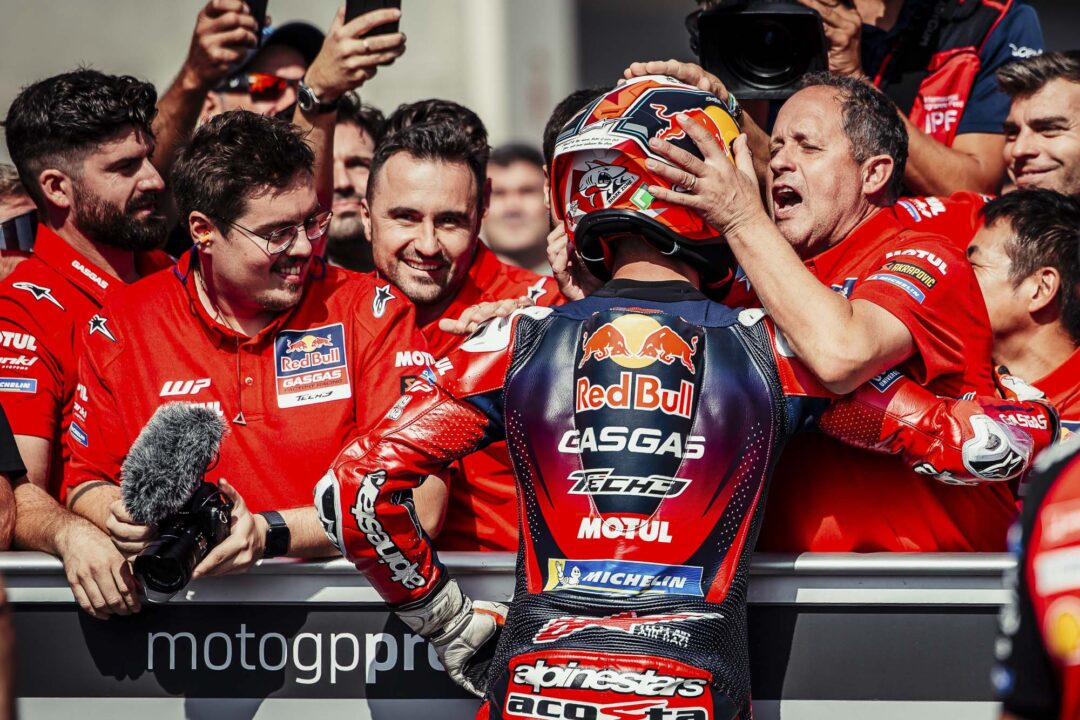
Kiwi Prankster
Trevathan looks forward to next year when he will accompany Pedro Acosta to the factory KTM team [the interview was before KTM’s financial woes became known]. The expectations will be high and the MotoGP pressure great, but one thing is sure, the big-hearted Kiwi will be enjoying himself and keeping up the Kiwi prankster tradition that he is famed for in the MotoGP paddock alongside guiding one of MotoGP’s rising stars. The lucky listeners at the OMCC talk undoubtedly look forward to the possibility of a tell-all book. Judging from the sense of humour, human depth and caring, and the extensive experience that Paul Trevathan has and continues to gain up to this point, this writer thinks it would be a riveting read.

